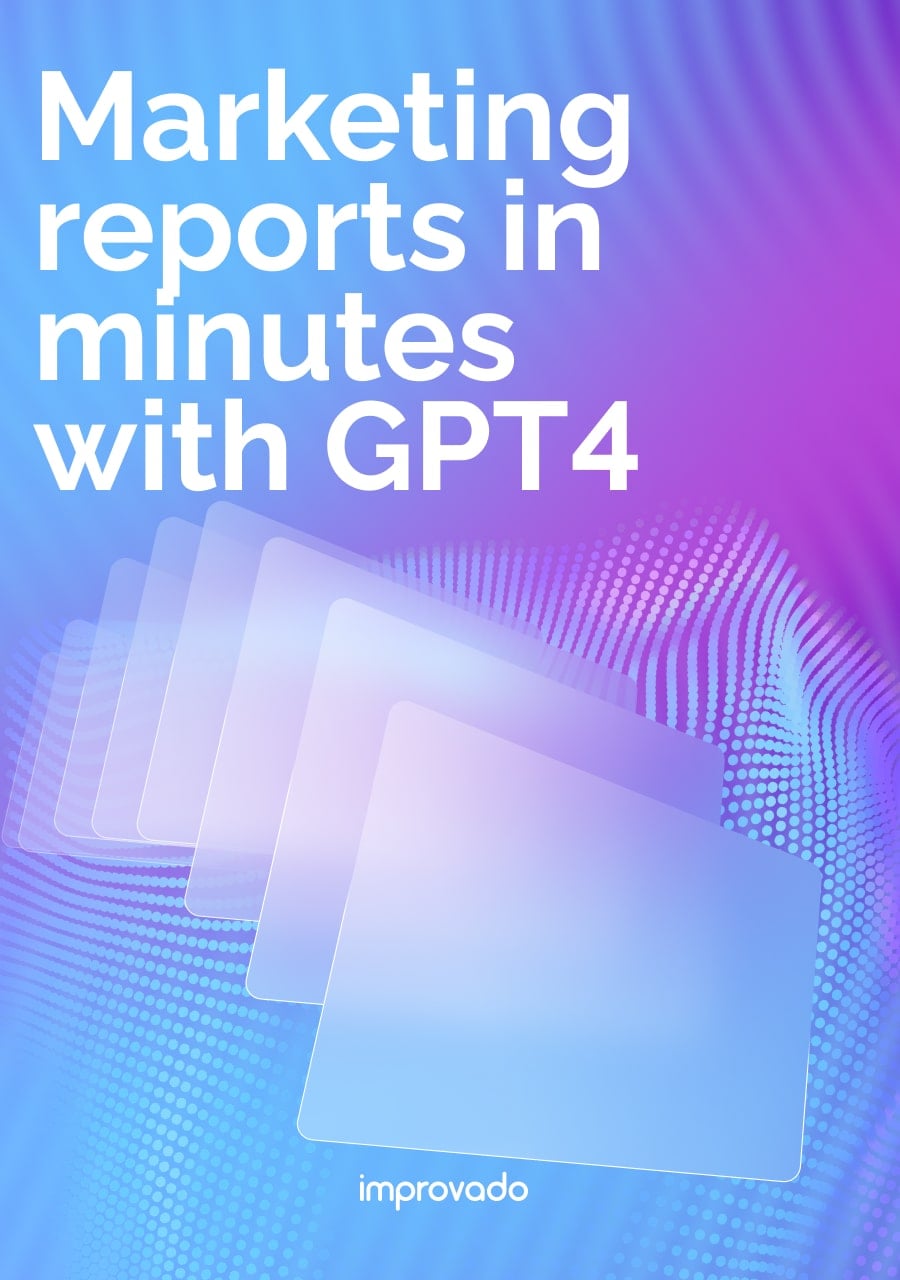Traditional marketing playbooks are no longer enough to guarantee success. In a landscape defined by fierce competition and data overload, businesses need a more agile, analytical, and customer-centric approach to scale effectively — growth marketing.
Growth marketing is a mindset rooted in continuous experimentation, data-driven decision-making, and a relentless focus on the user experience. This guide covers the key principles, frameworks, and strategies you need to build a powerful growth engine for your business in 2025.
Key Takeaways
- Full-Funnel Focus: Growth marketing optimizes the entire customer journey, from initial awareness to long-term retention and advocacy, not just customer acquisition.
- Data is Paramount: Every decision in growth marketing is backed by data. It relies on continuous experimentation, A/B testing, and performance analysis to drive results.
- The AARRR Framework: This model (Acquisition, Activation, Retention, Referral, Revenue) provides a structured way to measure and optimize growth across the customer lifecycle.
- More Than Just Tactics: While it employs strategies like SEO, CRO, and product-led growth, growth marketing is fundamentally a process of hypothesis, testing, and iteration.
- Not Just for Startups: Companies of all sizes, from nimble startups to established enterprises, can adopt growth marketing principles to accelerate revenue and enhance customer loyalty.
What Is Growth Marketing?
Growth Marketing vs. Traditional vs. Digital Marketing
Growth marketing takes a fundamentally different approach from traditional and digital marketing.
These strategies can be divided by how they approach growth and measurement:
- Traditional marketing focuses on reach and awareness,
- Digital marketing on online visibility and engagement,
- While growth marketing applies experimentation and data analysis across the entire funnel to drive measurable, sustainable business outcomes.
Here’s a more detailed comparison of the three strategies.
What Does a Growth Marketing Team Do?
A growth marketing team operates like a team of scientists, constantly forming hypotheses, running experiments, and analyzing results to find new opportunities for growth. Their responsibilities go beyond creating campaigns; they are tasked with building a scalable system for customer acquisition and retention.
Key roles within a growth marketing team often include:
- Growth Marketer / Growth Lead: Sets the overall strategy, prioritizes experiments, and manages the team's efforts to align with business goals.
- Data Analyst: Manages the data infrastructure, tracks experiment results, and uncovers insights from user behavior to inform the next round of tests.
- Channel Specialists: Experts in specific areas like SEO, content marketing, paid acquisition, or email marketing who execute experiments within their domains.
- Product Manager / Engineer: Often works closely with the growth team to implement product-led growth initiatives, such as improving the user onboarding flow or building viral features.
The team's primary function is to identify the biggest levers for growth, test their ideas methodically, and scale the winners while learning from the failures.
Key Principles of Growth Marketing
Growth marketing is guided by three core principles that distinguish it from other marketing disciplines.
The Power of Data in Growth Marketing
Data is the lifeblood of growth marketing. Instead of relying on assumptions, growth marketers use quantitative and qualitative data to understand user behavior, validate hypotheses, and measure the impact of their experiments. This involves tracking key metrics across the entire funnel, from click-through rates on an ad to churn rates in a subscription product.
Optimizing the Entire Customer Journey
Growth marketing recognizes that acquiring a new customer is just the beginning. True, sustainable growth comes from creating an exceptional customer experience that encourages repeat business and referrals. This means meticulously optimizing every touchpoint, including the first website visit, the user onboarding process, customer support interactions, and ongoing communication.
To optimize the full funnel, marketers must track metrics from initial awareness to long-term retention. This requires a holistic view that connects disparate datasets. Improvado helps teams achieve this by integrating with over 500 marketing platforms, allowing them to visualize the entire customer journey and identify drop-off points for optimization.
A Culture of Continuous Experimentation
The "always be testing" mantra is central to growth marketing. Growth marketers operate in rapid cycles of hypothesizing, building, testing, and learning. By constantly running A/B tests, multivariate tests, and other experiments on everything from ad copy and landing page layouts to email subject lines and product features, they systematically identify what works and double down on successful strategies.
The AARRR Framework: A Growth Marketing Staple
The AARRR framework, also known as "Pirate Metrics," is a foundational model for growth marketing. It breaks the customer lifecycle into five distinct stages, providing a clear structure for measuring and optimizing performance.
Acquisition: Attracting Your Target Audience
Acquisition is where growth begins, but it’s not about generating the most traffic, it’s about attracting the right users who are most likely to convert and stay engaged.
Effective acquisition strategies balance volume with quality by leveraging data to evaluate not just how users arrive, but which channels produce the most profitable customers over time.
How growth teams approach it:
- Map acquisition channels to downstream metrics like retention or lifetime value (LTV).
- Use attribution modeling to evaluate cross-channel performance (e.g., paid search vs. organic vs. social).
- Continuously A/B test creatives, landing pages, and CTAs to maximize qualified conversions.
Key Channels: SEO, paid search, content marketing, partnerships, affiliate programs, and PR.
Key Metrics: Qualified traffic, CAC, CTR, conversion rate, and lead quality score.
Activation: Creating a Meaningful First Experience
Activation is the "aha!" moment when a new user experiences the value of your product or service for the first time. A strong activation experience is critical for converting visitors into engaged users.
Acquisition is where growth begins, but it’s not about generating the most traffic—it’s about attracting the right users who are most likely to convert and stay engaged. Effective acquisition strategies balance volume with quality by leveraging data to evaluate not just how users arrive, but which channels produce the most profitable customers over time.
How growth teams approach it:
- Map acquisition channels to downstream metrics like retention or lifetime value (LTV).
- Use attribution modeling to evaluate cross-channel performance (e.g., paid search vs. organic vs. social).
- Continuously A/B test creatives, landing pages, and CTAs to maximize qualified conversions.
Key Channels: SEO, paid search, content marketing, partnerships, affiliate programs, and PR.
Key Metrics: Qualified traffic, CAC, CTR, conversion rate, and lead quality score.
Retention: Keeping Users Engaged
Retention measures how many of your customers continue to use your product over time. It is often the most critical driver of long-term growth, as it's far more cost-effective to retain an existing customer than to acquire a new one.
How growth teams approach it:
- Segment users by engagement frequency and cohort behavior to identify churn risks.
- Implement reactivation campaigns for dormant users using lifecycle triggers.
- Introduce new features or experiences to maintain relevance and prevent fatigue.
- Leverage predictive analytics to anticipate churn before it happens.
Key Channels: Email, push notifications, loyalty programs, community platforms, and product updates.
Key Metrics: Retention rate, churn rate, DAU/MAU, repeat purchase rate, and session frequency.
Referral: Turning Customers into Advocates
The referral stage focuses on encouraging satisfied customers to become brand advocates. A successful referral program can create a powerful, low-cost viral loop for customer acquisition.
How growth teams approach it:
- Segment users by engagement frequency and cohort behavior to identify churn risks.
- Implement reactivation campaigns for dormant users using lifecycle triggers.
- Introduce new features or experiences to maintain relevance and prevent fatigue.
- Leverage predictive analytics to anticipate churn before it happens.
Key Channels: Email, push notifications, loyalty programs, community platforms, and product updates.
Key Metrics: Retention rate, churn rate, DAU/MAU, repeat purchase rate, and session frequency.
Revenue: Maximizing Customer Lifetime Value
This is the final stage, where you monetize user activity. The goal is to increase the lifetime value (LTV) of each customer by optimizing pricing, upselling, and cross-selling strategies.
Rather than relying on one-time conversions, the goal is to build predictable, recurring revenue streams.
How growth teams approach it:
- Analyze revenue cohorts to understand which segments generate the highest margins.
- Optimize pricing models (subscription tiers, usage-based, freemium-to-premium paths).
- Automate upsell and cross-sell campaigns based on behavioral and product usage data.
- Integrate CRM, billing, and marketing data to identify expansion opportunities.
Key Channels: Subscription upgrades, renewal campaigns, pricing experiments, and personalized offers.
Key Metrics: LTV, ARPU, MRR/ARR, gross margin per user, and expansion revenue.
Benefits of Growth Marketing
Adopting a growth marketing mindset and strategy offers significant advantages for businesses looking to scale.
Data-Driven Decision Making
Growth marketing replaces guesswork with a scientific process. By grounding every strategic choice in hard data, businesses can allocate resources more effectively, reduce waste on underperforming marketing campaigns, and accelerate progress toward their goals.
Effective growth marketing relies on accurate, real-time data from all channels. For enterprise organizations, unifying data from hundreds of sources like social media, ad platforms, and CRM systems is a major challenge. An AI-powered marketing intelligence platform like Improvado automates this data pipeline, providing a single source of truth for growth marketers to base their experiments on.
Enhanced Brand Perception
A relentless focus on improving the customer experience at every touchpoint naturally leads to higher customer satisfaction. Happy customers are more likely to perceive the brand positively, trust its offerings, and become loyal advocates.
Long-Term Engagement and Retention
By optimizing for the entire customer journey, not just acquisition, growth marketing builds a loyal customer base. Strategies focused on retention and customer loyalty create a sustainable business model that is less reliant on constantly acquiring new customers.
Achieving and Surpassing Revenue Goals
Ultimately, the goal of growth marketing is to drive revenue. By systematically improving key metrics like conversion rates, customer lifetime value, and retention, growth marketing creates a powerful and predictable engine for long-term financial success.
10 Essential Growth Marketing Strategies and Tactics
Here are ten actionable strategies and tactics that growth marketing teams use to drive results across the funnel.
1. Content Marketing & SEO
Creating valuable, relevant content that answers your target audience's questions is a powerful way to drive organic traffic and build authority. When combined with strong SEO practices, it becomes a sustainable engine for customer acquisition.
2. A/B Testing and Conversion Rate Optimization (CRO)
CRO is the practice of systematically testing variations of web pages, emails, and ads to improve the percentage of users who take a desired action. A/B testing is the primary method used to identify which version performs better.
3. Product-Led Growth (PLG)
PLG is a strategy where the product itself is the primary driver of customer acquisition, activation, and retention. Tactics include offering freemium models, free trials, and building viral features directly into the product.
4. Email Marketing and Automation
Email remains one of the most effective channels for nurturing leads and retaining customers. Growth marketers use automated email sequences for onboarding new users, re-engaging inactive ones, and promoting new offerings.
5. Social Media Marketing and Community Building
Beyond simply posting content, growth marketers use social media to build engaged communities, gather customer feedback, and drive traffic. This involves identifying the right platforms for the target audience and creating interactive content.
6. Referral Programs
Incentivizing existing customers to refer their friends is a classic growth hacking tactic. A well-designed referral program can lower customer acquisition costs and leverage the power of word-of-mouth marketing.
7. Influencer Marketing
Collaborating with influencers who have credibility with your target audience can be a highly effective way to build brand awareness and drive conversions, especially for e-commerce and consumer brands.
8. Customer Retention Programs
These programs are designed to increase customer loyalty and reduce churn. Examples include loyalty points, exclusive access for long-term customers, and proactive customer support.
9. Lead Generation via Gated Content
Offering high-value content like ebooks, whitepapers, or webinars in exchange for an email address is a proven strategy for building a list of qualified leads that can be nurtured over time.
10. Leveraging Social Proof and Testimonials
Displaying customer reviews, testimonials, case studies, and trust badges on your website and marketing materials builds credibility and reduces friction for potential new customers, boosting conversion rates.
Managing multi-channel marketing campaigns, from SEO and paid ads to email, can lead to fragmented data and reporting headaches. Growth teams use platforms like Improvado to consolidate their MarTech stack, reducing reporting time by up to 75% and freeing up analysts to focus on strategic insights rather than manual data pulls.
Examples of Successful Growth Marketing in Action
These companies famously used growth marketing principles to achieve massive scale.
Dropbox's Referral Program
Dropbox pioneered the two-sided referral program. Instead of just rewarding the referrer, they gave free storage space to both the person referring and the new user who signed up.
This created a powerful viral loop that was directly tied to product value, helping them grow exponentially with minimal ad spend.
Airbnb's Craigslist Integration
In its early days, Airbnb identified that its target audience was already looking for short-term rentals on Craigslist. They built an unofficial integration that allowed hosts to cross-post their Airbnb listings to Craigslist with a single click. This growth hack tapped into a massive existing user base and drove a huge volume of new listings and bookings.
HubSpot's Website Grader Tool
HubSpot, a leader in inbound marketing, created a free tool called Website Grader. Users could enter their URL and receive a free report on their website's performance, including SEO and mobile optimization. This provided immense value upfront, generated a massive number of qualified leads for their core software product, and established HubSpot as an authority in the space.
Is Growth Marketing Only for Startups?
Absolutely not. While growth marketing and "growth hacking" gained fame in the startup world due to the need for rapid, capital-efficient growth, its principles are universally applicable. Established enterprises are increasingly adopting growth marketing to combat market saturation, innovate faster, and optimize their large-scale marketing efforts.
For large companies, a growth marketing approach can help break down internal silos, foster a culture of experimentation, and identify new revenue streams. For small businesses, it provides a framework for making the most of a limited budget by focusing on the highest-impact activities.
Conclusion
Growth marketing at the enterprise level is no longer about quick wins or isolated experiments. It’s about building a repeatable, data-driven system that ties acquisition, activation, and retention directly to measurable revenue outcomes. Large organizations must manage vast amounts of customer data, overlapping channels, and long sales cycles—all while maintaining speed and accountability. The real challenge lies in connecting those moving parts into a single feedback loop that enables smarter testing, faster learning, and scalable growth.
Improvado makes that possible by unifying marketing, product, and revenue data into one governed ecosystem. It automates data collection, normalization, and analysis from hundreds of platforms, giving teams real-time visibility into performance across the full funnel.
With AI-powered insights, anomaly detection, and customizable dashboards, Improvado helps teams identify growth opportunities, validate experiments, and measure impact without relying on fragmented tools or manual reporting. It’s the infrastructure that turns enterprise-scale growth marketing from reactive to predictive.
.png)




.png)
